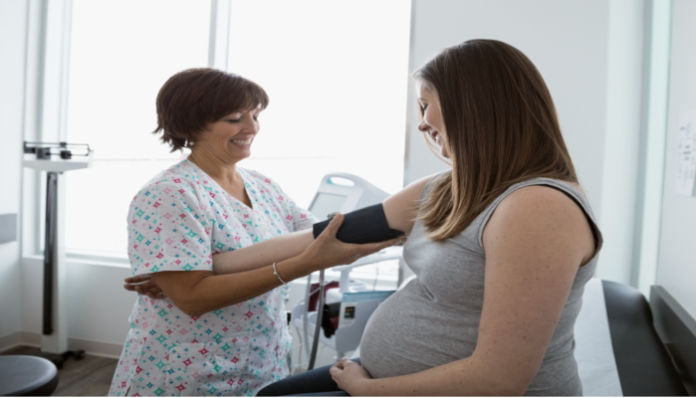What is Adenomyosis?
Adenomyosis refers to a condition where the inner lining of the uterus breaks through the muscle wall (the myometrium). It can occur anywhere inside the uterus. Moreover, DR. Ruchi Bhandari, a well-known Fertility expert and Director of a leading IVF Centre in Jaipur, says – adenomyosis may cause menstrual cramps and lower abdominal pressure. It can also lead to heavy periods. Although adenomyosis can be harmless and not life-threatening, it can cause severe pain and excessive bleeding that can affect a woman’s quality of life. Hence, adenomyosis treatment may help couples to become parents.
In this blog, we are going to cover all the details regarding adenomyosis treatment, causes, symptoms, and its cost. Order Oxycodone Online
What Are The Causes of Adenomyosis?
Firstly, Adenomyosis is not yet known to have a specific cause. Here are some of the reasons doctors have seen in patients prior to adenomyosis treatment.
- Invasive growth of tissue – In some rare cases, The uterine wall muscle gets blocked by endometrial cells. Fertility experts believe that endometrial cells may be able to invade the uterus wall directly through incisions made during a C-section (cesarean section).
- Uterine inflammation – The usual boundary of cells in the uterus may be broken by inflammation of the uterine wall during postpartum.
- Stem cell origins – Recent theories suggest that stem cells from bone marrow invade the uterine muscles, causing adenomyosis.
What Are The Symptoms of Adenomyosis?
Many people suffering from adenomyosis do not experience any symptoms. Some people experience:
- Painful menstrual cramps.
- Heavy menstruation bleeding.
- Abnormality in menstruation.
- Pelvic pain.
- Painful intercourse.
When Should You See The Doctor?
If you experience prolonged heavy bleeding or severe cramping interrupting your daily activities, you should consult a fertility expert.
Who Needs Adenomyosis Treatment?
Adenomyosis is more common in women between the age of 35 and 50 years old who have:
- Minimum one pregnancy
- Endometriosis.
- Uterine fibroids.
Researchers believe hormones like estrogen, progesterone, and prolactin may contribute to adenomyosis, though the exact cause is unknown.
How to Diagnose Adenomyosis?
Healthcare providers often diagnose adenomyosis based on symptoms and one of these tests.
- Pelvic exam: Your provider might notice that your uterus is becoming larger, more flexible, or more painful during a pelvic examination.
- Ultrasound: Transvaginal ultrasound uses sound waves for images of the pelvic organs. Sometimes, these images may show muscle thickening, raising suspicion for adenomyosis.
- Imaging scans: Magnetic resonance imaging (MRI) scans can reveal uterine enlargement or thickening in certain regions, indicating adenomyosis.
- Biopsy: Because tissue grows inside the uterus walls, it is impossible to biopsy the tissue without a hysterectomy.
Adenomyosis can often be misdiagnosed with uterine fibroids because the symptoms are similar. However, both conditions are different. A uterine fibroid is a tumor that grows in the uterine wall. Adenomyosis is a less defined mass of cells in the wall of the uterus. It is crucial for you to get diagnosed and choose the proper treatment for yourself.
How is Adenomyosis Treatment Performed?
Adenomyosis treatment depends on the severity of your symptoms and whether you are currently pregnant or not. A doctor can treat mild symptoms with pain relief medicines.
Anti-inflammatory medications – To ease mild symptoms of adenomyosis, your doctor may recommend nonsteroidal anti-inflammatory drugs (NSAIDs). The NSAIDs start 1 to 2 days prior to your period begins and continue for the duration of your period.
Hormone therapy – Fertility experts can control symptoms such as heavy or painful periods with hormonal therapies such as IUD & aromatase inhibitors.
Embolism of a uterine artery – Doctors use a minimally invasive procedure to shrink fibroids. Tiny particles block blood vessels that supply blood flow to the adenomyosis. The radiologist inserts a small tube into the patient’s vein to guide the particles inside the uterus to cut off the blood supply to adenomyosis. The adenomyosis shrinks when the blood supply interrupts.
Endometrial Ablation – This mild invasive surgery removes the uterus lining. Doctors use endometrial ablation to relieve some symptoms of adenomyosis that haven’t reached the muscle wall yet.
What are the Complications of Adenomyosis?
Adenomyosis increases the risk of anemia because of heavy menstrual bleeding. You might feel tired and cold all the time if your body lacks enough iron-rich red blood cells.
What is the Cost of Treating Adenomyosis in India?
In India, Intrauterine devices are available at the cost of 300 – 500 Rs and for a single strip of oral contraceptive pills, you have to pay 50 Rs. Likewise, anti-inflammatory drugs cost on average between 40 and 100 Rs. Moreover, the cost of an adenomyosis treatment through hysterectomy in India ranges between (1,75,000 to 2,40,000 INR) depending upon the type of surgery and the location.
Conclusion
Fertility experts say that there is a possibility that you don’t know you have adenomyosis. It doesn’t always lead to symptoms. If symptoms like heavy periods, cramping, or painful intercourse occur, it can disrupt your life. Find ways to alleviate these symptoms by talking to your healthcare provider. There are several hormonal medications that may help.


